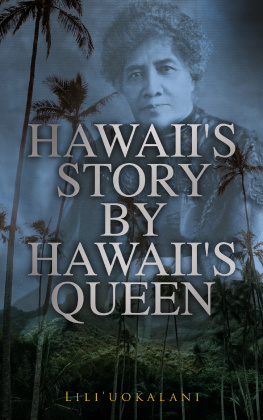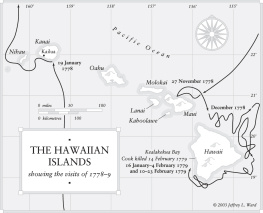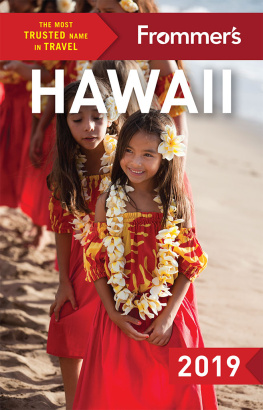This book is published with the assistance of a grant from the Stroum Book Fund, established through the generosity of Samuel and Althea Stroum. An additional grant was provided through the generosity of Bamboo Ridge Press, Honolulu.
Copyright 1991 by the University of Washington Press
First paperback edition 2014
All rights reserved. No portion of this publication may be reproduced or transmitted in any form or by any means, electronic or mechanical, including photocopying, recording, or any information storage or retrieval system, without permission in writing from the publisher.
Library of Congress Cataloging in Publication Data
Sumida, Stephen H.
And the view from the shore : literary traditions of Hawaii / Stephen H. Sumida.
p. cm.
Includes bibliographical references and index.
ISBN 978-0-295-99290-7 (alk. paper)
1. American literatureHawaiiHistory and criticism. 2. American literatureAsian American authorsHistory and criticism. 3. American literatureOceanian American authorsHistory and criticism. 4. Oceanian Americans in literature. 5. Asian Americans in literature. 6. Hawaiiintellectual life. 7. Hawaii in literature. I. Title.
PS283.H3S86 1991 90-46127
810.99969dc20 CIP
The paper used in this publication is acid-free and meets the minimum requirements of American National Standard for Information SciencesPermanence of Paper for Printed Library Materials, ANSI Z39.481984.
Title page and chapter ornaments are from a detail of a Polynesian tapa cloth.
Preface
This book is intended as a catalyst. I hope it will cause readers to take a fresh look at the vivid and various patterns within Hawaiis pastoral and heroic literary traditions. As a literary history, the book covers two centuries of Hawaiis culture since Captain James Cooks arrival in 1778. The approach is multicultural, ranging through and relating together the spectrum of native Hawaiian, colonial, tourist, and polyethnic local literatures. Analysis of these broadly representative works invites the reader to explore further in the literature itself and to reconsider the present and future direction of Hawaiis writers.
I hope that my comments are inclusive, but a synthesis does not purport to be the final word. In the kaona, or subtext, of what I say here, please read this. I am glad that the creation of Hawaiis literatures continues today, and that critical studies of it, my own and others, will continue as well. Indeed, rather than close with the conventional pau, meaning finished and final, I conclude my book with the Hawaiian word lawa, implying sufficient for the moment and for the task at hand.
While this book is unprecedented in its scope and theme, the lack of prior full-length studies of the kind may be surprising, especially when the image of Hawaii as paradisethe simple pastoral viewis so predominant worldwide that it loudly begs that opposite, heroic aspects of the islands arts and cultures be considered as well. Hawaiis isolation, not merely perceived but promoted, has tended to keep humanists in particular away from undertaking such a task, perhaps out of fear that in ones interpreting and in ones teaching, without an adequate guide, one is bound to violate a supposedly unique and exotic culture.
Explicit historical, social, political, and linguistic contexts of Hawaii, and to a smaller extent literary theory, inform my analyses and explications of texts, which in turn reinterpret the nonfictional contexts themselves. These texts include poems, song lyrics, novels and short fiction, drama, and certain historical writings and events that epitomize cultural milieux and sensibilities. Though the texts are necessarily selected, the book is thus comprehensive in important ways. While it is extensive, however, the work also serves as an introduction to the literature, its history, and its most salient concepts. I hope that my study of particular texts presents paradigms that will prove useful in interpreting and evaluating works and authors that I have not specifically covered.
Hawaiis writers and artists are a diverse group of people who have been devoting lifetimes to articulating their cultures and who continue to contribute to them. In this book, analysis of specific contemporary works is carried up to the 1980s, including in the closing chapter a discussion of the Hawaiian Renaissance and the Talk Story Writers Conferences of 1978 and 1979. Hawaiis writers are notably productive today in several literary genres, as are scholars of numerous disciplines and specialties; I would like to think that the literary groundwork and events of the late 1970s as well as earlier writers in the traditions recalled here have helped make possible such a literary life in and for Hawaii. For the interested reader, I note the following selected writers, in alphabetical order, who have published major works during the 1980s, each in some way or another representative of serious literary activity in Hawaii. Their publications are listed in the Bibliography: Keith S. Abe, Nell Altizer, Joseph Balaz, John Charlot, Steven Goldsberry, Garrett Hongo, Dean Honma, Doris Kawano, Juliet S. Kono, Wing Tek Lum, Michael McPherson, Pat Matsueda, W. S. Merwin, Rodney Morales, Susan Nunes, Leialoha Apo Perkins, Tony Quagliano, Marjorie Sinclair, Michelle Cruz Skinner, Cathy Song, and Frank Stewart.
In another category entirely are Ken Goring, whose Gone to Maui (1983) is so egregiously a potboiler that it must be a parody of the kind, and Hunter S. Thompson and Ralph Steadman, whose The Curse of Lono (1983) simply repeats stereotypes about primitive peoples and their gods in a conventional way uncharacteristic of Thompsons usually acid (to put it mildly) words and views.
Locally published literary journals and anthologies since 1980 include Bamboo Ridge: The Hawaii Writers Quarterly, Hawaii Review, and Literary Arts Hawaii (formerly the Hawaii Literary Arts Council Newsletter), which continue from earlier years to publish local and other writers, and since 1987 the Chaminade Literary Review has joined them. Hapa, The Paper, Hanai, Ramrod, and Hawaii Pacific Review, some of these newly, not regularly, or no longer published, have also featured local writers in this decade. A new literary journal,















